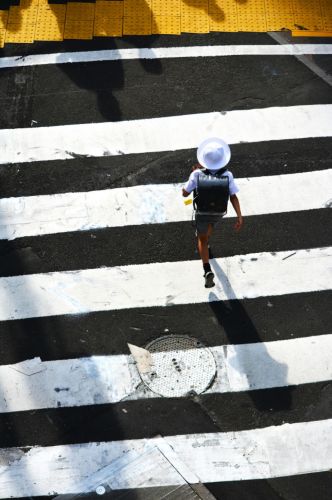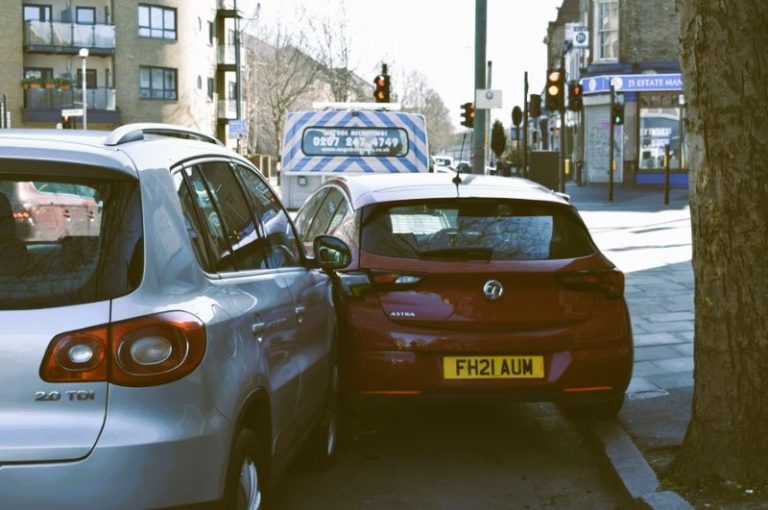

Every intersection and sidewalk has a story to tell—of split-second decisions, narrow escapes, or lives changed in an instant.
As our cities grow and transform, these stories become the living memory of our neighborhoods.
They reveal how communities value safety, prioritize vulnerable road users, and rally together after tragedy.
From quiet acts of caution to bold calls for reform, the tales written on our streets shape how we understand risk, resilience, and the shared duty to look out for one another.
This article dives into those stories—and what they mean for safer streets ahead.
The Legal and Human Dimensions of Street Safety
Every street incident, whether a minor collision or a life-changing crash, leaves ripples that reach far beyond the scene itself.
For individuals and families, these events can trigger emotional trauma, financial strain, and difficult questions about what comes next.
Communities often respond to high-profile tragedies with calls for change—sometimes sparking new laws, public safety campaigns, or shifts in how streets are designed and policed.
Legal action frequently becomes a turning point after serious roadway incidents.
Victims and their loved ones must navigate complex insurance claims, liability issues, and the daunting task of holding responsible parties accountable.
This is where strong advocacy and experienced legal guidance make all the difference.
Sutliff & Stout stands out as a trusted partner for those seeking justice after roadway accidents across Texas.
The firm’s mission goes beyond securing compensation; it’s about empowering clients to understand their rights and ensuring no one faces this process alone—regardless of background or financial status.
Raising public awareness is another vital piece of the puzzle.
When stories of survival, accountability, or loss are shared publicly, they often drive policy reforms and inspire others to advocate for safer streets in their own neighborhoods.
Key Takeaway: The human impact of street safety is deeply personal yet universally significant—and legal support can help transform tragedy into meaningful change for entire communities.
Urban Design and the Architecture of Survival
The shape of a city’s streets can mean the difference between safety and tragedy.
Every curb, crosswalk, and bike lane reflects choices made by planners—choices that directly impact how people move and survive in urban spaces.
Good street design doesn’t just make travel easier; it saves lives.
When policies support safer layouts—like narrower lanes, raised medians, and clear sightlines—communities see fewer accidents and faster emergency response times.
But it’s not only about rules or blueprints.
The daily routines of residents interact with the built environment in subtle ways: a shortcut through a poorly lit alley, a child’s route to school along a busy road, or seniors navigating complex intersections.
This constant interplay reminds us that design isn’t static—it adapts as neighborhoods evolve, traffic patterns shift, or new challenges emerge.
Key Takeaway: The most resilient cities are those where urban design anticipates risk and puts people first, blending thoughtful planning with real-world experience.
Safe Streets by Design: Lessons from Leading Cities
What happens when cities treat street safety as a design challenge rather than an afterthought?
The results speak for themselves: lower injury rates, fewer fatalities, and communities that feel more connected and confident walking or cycling their streets.
Traffic calming measures—like speed humps, curb extensions, and roundabouts—naturally slow vehicles without relying solely on enforcement.
Protected bike lanes give cyclists their own space, reducing conflicts with cars while encouraging more people to ride instead of drive short distances.
Pedestrian zones turn bustling streets into vibrant gathering places where kids can play safely and local businesses thrive.
A 2023 report from the International Transport Forum details case studies of cities that have cut traffic deaths through smart urban street design—including upgraded crossings, better mobility options, and community-driven planning processes. (Urban Road Safety Case Studies)
Key Takeaway: Proactive city planning rooted in proven strategies delivers lasting improvements for everyone who uses the street—not just drivers.
The Hidden Hazards: Intersections, Lighting, and Infrastructure
No matter how carefully main thoroughfares are planned, overlooked details can turn everyday trips into dangerous gambles.
Poor lighting makes it harder for drivers to spot pedestrians at night—and even more difficult for someone on foot or bike to judge gaps in traffic.
Crumbling sidewalks force wheelchair users or parents with strollers into busy roads where they’re exposed to greater risk.
Difficult intersections—where sightlines are blocked by overgrown trees or confusing signage—often become hotspots for collisions but rarely receive the same attention as major corridors.
Lack of maintenance magnifies these dangers over time. Potholes grow deeper. Stormwater pools where drainage is poor. Faded crosswalks become invisible during rush hour rainstorms—a familiar sight in Houston after a downpour.
Pro Tip: Regular infrastructure audits—done with input from local residents—can reveal small fixes that have outsized impacts on street safety.
Key Takeaway: True safety requires more than headline projects; it demands vigilance over every detail that shapes how we navigate our streets each day.
Community Voices: Stories of Survival and Advocacy
Every street carries echoes of lives changed in an instant—stories that don’t just end with recovery or loss, but often become sparks for change.
Personal accounts from survivors and advocates remind us that traffic incidents are never just statistics.
They reveal the power of resilience, grief transformed into activism, and the determination to ensure no family faces the same pain alone.
The collective memory held within a community’s streets pushes leaders to listen, act, and rethink priorities.
Through storytelling—shared at city council meetings, vigils, or online—these voices inspire new laws, better infrastructure, and a culture where safety matters to everyone.
Survivors as Catalysts for Change
Behind many street safety reforms stand individuals whose lives were forever altered by a single event.
Some survivors channel their experience into campaigns for safer crosswalks or stricter speed limits.
Families who have lost loved ones often lobby tirelessly for changes like lower speed zones near schools or improved signage at dangerous intersections.
These efforts can lead to real-world policy shifts—a new traffic signal installed after a public outcry, or an annual day of remembrance that galvanizes local action.
The courage to speak out transforms private pain into public good, showing how advocacy born from tragedy helps protect countless others on the road.
Grassroots Movements and Memorials
Communities frequently respond to roadway tragedies by coming together in powerful acts of remembrance and protest.
Memorials—ghost bikes, candlelit vigils, murals—turn personal loss into public symbols demanding attention from both citizens and officials.
The global #StreetsForLife campaign, running from 2023 to 2025, illustrates this impact on an unprecedented scale. Through memorials, public art installations, and coordinated social media efforts across more than 1,000 cities, communities honor victims while pressing for lasting changes in street design and policy.
This movement has spurred policy discussions and led to new safety pledges worldwide. It proves that grassroots voices—when amplified through creative action—can influence lawmakers and foster safer urban spaces for all.
Technology, Data, and the Future of Safer Streets
What does it take to make a street truly safe? Increasingly, the answer is technology—combined with smart data and public involvement.
Today’s urban landscapes are seeing a transformation. Real-time analytics, connected infrastructure, and open-access safety tools are reshaping how we detect risks and respond to incidents.
From sensors that monitor traffic flow to platforms that let residents report hazards, innovation is driving a new era of street safety.
The shift isn’t just about gadgets or software. It’s about turning information into action—and ensuring everyone has a role in making streets safer for all.
Smart Streets: Sensors, Cameras, and Real-Time Alerts
Cities across Texas and beyond are weaving technology into the very fabric of their roads.
Networked sensors collect data on traffic speeds and congestion. Cameras spot risky behaviors—like running red lights or illegal turns—and send instant alerts to authorities.
Emergency responders benefit from these tools too. Real-time notifications help direct ambulances to crash scenes faster and reroute traffic to clear the way.
Some cities have even deployed AI-driven crosswalks that adjust signals based on pedestrian activity—an approach already credited with reducing collisions in busy downtown areas.
Pro Tip: If your city offers real-time safety alerts via app or text, encourage employees or community members to sign up for updates during commutes.
Key Takeaway: Technology empowers cities to move from reactive fixes to proactive prevention—saving lives before incidents occur.
Transparency and Public Engagement Through Data
The power of open safety data goes beyond dashboards—it builds trust and sparks community action.
Digital platforms now enable residents to share personal experiences of crashes or near-misses. This crowdsourced information reveals patterns often missed by traditional reporting methods.
A great example is UC Berkeley’s Street Story Platform, launched in 2023. It lets anyone log hazards or tell their story, creating a living map of risks that city planners can act on directly.
This transparency gives citizens a voice while pushing decision-makers toward smarter policies—and stronger accountability.
Key Takeaway: When people can see—and shape—the data behind street safety decisions, safer streets become everyone’s business.
Conclusion
The stories written on our streets—marked by hardship, hope, and hard-won progress—remind us that every intersection is more than pavement and paint.
Survivors, advocates, and communities transform loss into action, driving reforms that make neighborhoods safer for all.
But real change depends on ongoing collaboration.
Citizens sharing experiences, policymakers listening, and advocates pushing for solutions—each voice matters in shaping a future where safety is never taken for granted.
Together, we can ensure every street story becomes one of resilience and collective responsibility.


